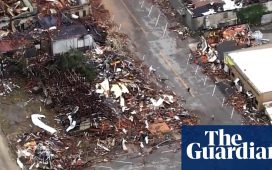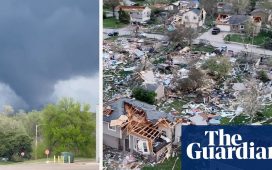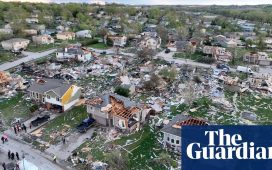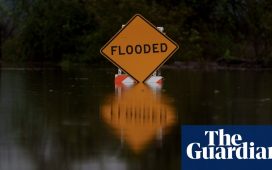At least two people were killed and hundreds of thousands of residents of the north-eastern US remained without power on Friday following a major spring storm that dumped up to two feet of snow in some areas.
Elsewhere in the country, others prepared for more severe weather that threatened to impede viewing for Monday’s total solar eclipse.
The worst-affected areas from the overnight storm were in Vermont and Maine, where the eclipse will pass later on Monday before passing into Canada. More than a quarter of a million customers in Maine were still without electricity at 9am Friday from heavy snow, torrential rain and high winds, according to poweroutage.us.
A new wave of storms moving across southern and central US Sunday into Monday, meanwhile, posed a risk to clear eclipse viewing in many of the 15 states that the celestial spectacle will pass over in the afternoon.
“Totality or bust,” said a message on the National Weather Service website monitoring conditions ahead of the eclipse.
It warned of an up to 80% likelihood of thunderstorms, severe weather and flash flooding in the south-central US on Monday that the NWS said could lead to “hazardous travel” following the eclipse.
“There is still uncertainty,” the website said. “Cloud cover in the path of totality continues to look most likely from Texas through southern Arkansas, and is also possible for portions of Ohio, north-west Pennsylvania and far western New York.”
A woman died in Armonk, New York, when a tree fell on to her vehicle, officials said, and in Derry, New Hampshire, one woman was killed and another injured in a house fire following a tree falling on propane tanks.
Heavy snow hampered travel in northern New England and New York, and authorities reported multiple vehicle crashes. The storm brought mostly heavy rain and high winds to southern parts of the north-east.
A threat of flooding persisted on Friday in West Virginia and in lower-lying areas along the Ohio River.
Experts said that although the worst of the weather would probably be over in many areas by the time of the eclipse, which passes from Mexico into Texas at about 1.30pm local time on Monday, rain and low clouds could prevent a perfect view.
Marc Chenard, an NWS meteorologist, said that north-eastern parts of the US currently digging out from Thursday night’s storm would have the best chance of clear skies, along with parts of Arkansas, Missouri and Illinois.
Canada, he said, would also have only light cloud cover that will not significantly affect the view.
Parts of Ohio, Pennsylvania, New York and Texas are questionable, while north-east Texas, Chenard said, “could kind of go either way at this point”.
At least 31 million people live in the eclipse’s 115-mile wide path of totality, Nasa said, with another 4 to 5 million people expected to travel to get a better view. Authorities in several states and cities, expecting major crowds, have declared states of emergency.
The Associated Press contributed reporting




